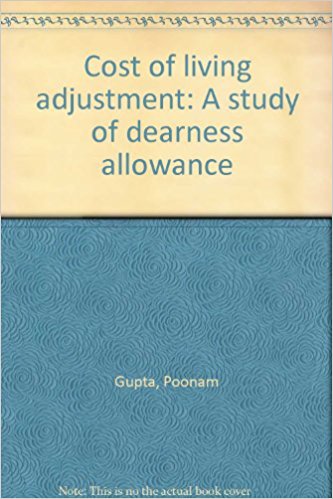One of the major achievements of the organized working class in the market economies of the world, where wages are settled between employers and employees through collective bargaining, is its right to obtain compensation in wages from time to time by an agreed rate of dearness allowance for a given rise in cost of living. While this has become a time-honoured practice, especially since the World Wars, the actual system of calculating the rate of dearness allowance varies not only from country to country but also within different sectors in the same country. Such differences in dearness allowance calculations are so pronounced in India that it could fairly accurately be identified as the most important factor that distorts the overall wage structure in the economy.
The book under review is an attempt to catalogue the differences prevailing in the determination of dearness allowance (DA) in various sectors of Indian economy, its movement over time and the expected burden of DA component in total wage costs by the turn of this century.

